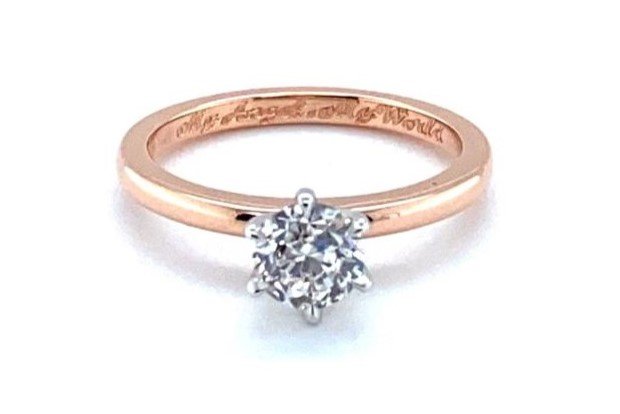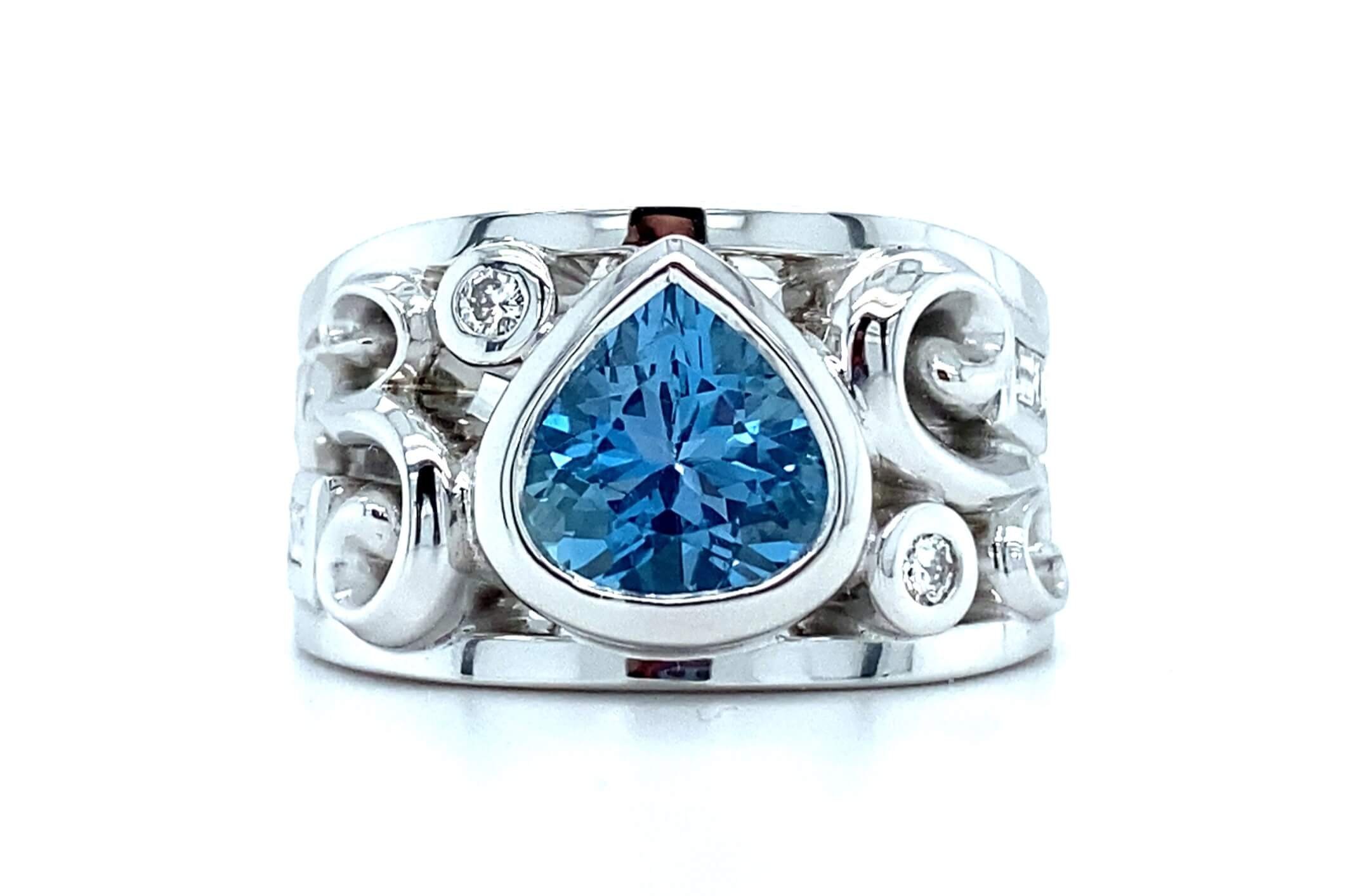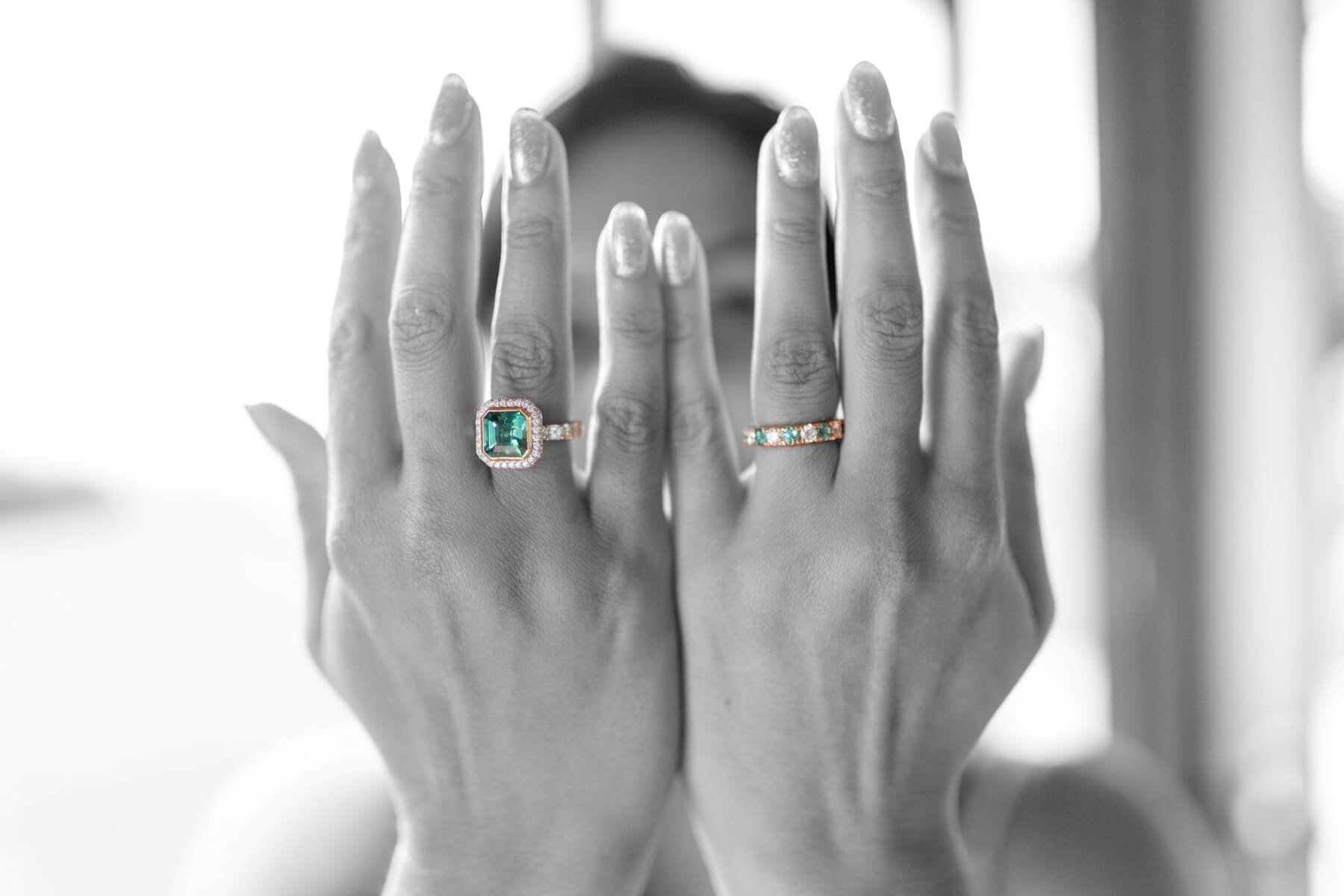SARA HANDMADE JEWELLERY
Pearl
Australian made
20 Years experience
Ethically sourced gemstones
Created to last a lifetime
What Are Pearls?
Through royalty, film and fashion pearls have had a rich history. One of June’s three birthstones has long been associated with wisdom, love and affection. Over the past few years pearls have also made a comeback as they shed their stigma of being prim, proper and conventional. Nowadays, along with vintage pieces we are seeing pearls used more and more new modern pieces and custom jewellery designs.
A pearl is a hard, glistening organic gem that is grown within a living mollusc. Concentric layers of Nacre (calcium carbonate) are deposited by the animal, around an irritant (like a parasite or grain of sand) creating the pearl we know and love. The ideal pearl is perfectly round and smooth, although many other shapes occur and they are nearly never flawless.
How are Pearls Formed?
There are basically three types of pearls: natural, cultured and imitation.
Natural Pearls (also referred to as oriental pearls) form when an irritant - normally a parasite, not a grain of sand as the common myth goes, works its way into the shell of certain mollusks. As a defense mechanism, the mollusk seals off the irritation by coating the irritant in a fluid. The fluid, calcium carbonate which is also known as ‘nacre’ is then coated, layer upon layer until a lustrous pearl is formed.
A cultured Pearl is formed by essentially the same process. The main difference in cultured pearls is that the irritant is a manually implanted bead or piece of shell. This seed becomes the nucleus in the formation of the pearl. Quality cultured pearls can take at least 3 years for a thick layer of nacre to be deposited and gem quality pearl formed.
Imitation pearls can be made from mother-of-pearl, coral or conch shell, as well as glass beads coated in a solution containing fish scales. This coating does not last and the the lustre will fade over time.
Our past experiences working in the pearl industry gives us gemstone sourcing knowledge and ability to source the best pearls for our jewellery. If you have ever wanted your own strand of pearls, or custom jewellery design featuring pearls, we can help you to find these unique gems.
Custom Made Jewellery with Pearls
The only gemstone created by a living creature, pearls are and essential part of any jewellery collection.
What Our Customers Say
Different Types of PearlsAre Emeralds Expensive?
South Sea Pearls
South Sea Pearls are the largest and rarest pearl variety. They are cultivated most commonly in Australia, Myanmar, Indonesia and Islands of the South Pacific. South Sea Pearls can be grown naturally in a variety of colours by cultivating them in a variety of oysters and locations. South Sea Pearls rarity is largely because as they are larger pearls they require a great deal of time to grow. Over this time there is more chance of mishaps such as the oyster dying or the pearl becoming misshapen. The scarcity of fine quality specimens is the reason South Sea Pearls command the highest colours. The most common colour of South Sea Pearls are white, silver and gold.
Akoya Pearls
Akoya Pearls are the saltwater cultured pearls from Japan. They are the most abundant and lustrous of all pearl varieties and have the longest cultured history. Their name comes from the fact they are cultivated in the Akoya oyster in oceans, usually around Japan. The Akoya Pearl is found in sizes of up to 10mm and grows in a limited variety of colours. Most commonly Akoya pearls are found in white with overtones of rosé, silver or grey. Although extremely rare they have also been found with natural shades of blue, pink and gold. Black Akoya Pearls when seen have undergone colour treatment as this isn’t a natural colour for these pearls.
Tahitian Pearls
Tahitian or black Pearls are formed from the black lip oyster in the islands of French Polynesia surrounding Tahiti. Tahitian Pearls are a great example of a naturally occurring black pearl. Natural Tahitian pearl colours can include deep grey or black, purple, gold, green and silver. Tahitian pearls are considered to be the second most valuable pearl behind the white or gold South Sea Pearl.
Freshwater
Freshwater pearls are cultivated in mussels in freshwater lakes and rivers predominantly in China. The freshwater pearls are smaller and are available in a variety of shapes. Freshwater pearls are by far the most affordable of all pearls due to their availability. It is possible to culture more than one pearl at a time in a freshwater mussel so they are more abundant than other varieties. The three most common natural colours of freshwater pearls are white, lavender and pink with most of them being white to créme.
How Are Pearls Graded?
Everybody has heard of the four C’s of dimond grading colour, cut, clarity & carat weight. When grading pearls, there are 7 factors to consider which include size, shape, colour, luster, surface quality, nacre quality and matching.
The GIA (Gemological Institute of America) has been a leader in identifying and classifying pearls since 1949. The GIA identify and classify pearls using the 7 areas mentioned. Unlike diamonds however, there is no industry standard and scales can vary between companies and farmers.
Different Pearl Shapes
The shapes of pearls differs greatly from other gems. Some of the most common shapes for pearls are;
Round - Round Shapes are the most sort after and valuable pearl.
Semi Round - Are very near to being perfectly round. They are less valuable than perfect rounds.
Baroque - An irregular, unusual shaped pearl.
Blister - A pearl that has grown onto the inside surface of the oyster or mussel, dome shaped on one side and flattened on the other.
Mabe – Grown by gluing a plastic nucleus to the inside surface of an oyster or mussel, resulting in a domed shape with a flattened back.
Drop - Drop shaped pearls get their name from their resemblance to a tear drop.
Button - A squashed round shaped pearl where one side of the pearl is flattened.
Potato Shape – Slightly irregular oval shape resembling a potato; most potato shaped pearls are freshwater from China.
Rice Shape - A regular, oval-shaped pearl that resembles a grain of rice; most rice pearls originate from China or the United States.
Our Services
Sara Handmade Jewellery offers bespoke jewellery, custom designs and everything in between to keep you sparkling
-

Bespoke & Custom
Have a piece jewellery custom designed and created just for you. Become a part of the design process for your new special piece.
-

Engagement Rings
We will find the perfect gemstone to create you an engagement ring that expresses your love and will be treasured forever.
-

Jewellery Remodelling
Have family heirlooms, sentimental jewellery and unworn pieces remodelled into something new. Add gems and give the design your own personal touch.
-

Repairs & Restoration
Repair or restore your damaged jewellery to look like new. Resizing, rhodium plating, re-tipping as well as replacing damaged and missing gemstones.
-

Dress & Cocktail
Big, bold and beautiful dress rings designed to make a statement. We can help you create your own bespoke statement ring.
-

Gemstone Sourcing
We will find the precious and semi-precious gems you are looking for in any colour, size, shape or clarity.
FAQs on Pearls
-
Although they are considered a gemstone, Pearls differ greatly in one way from all others. Pearls are the only gemstone to come from a living creature. All other gemstones formed in the Earth’s crust when magma cools.
-
South Sea Pearls are the largest and normally considered the most valuable of all pearls. A strand of South Sea Pearls can vary in price from just over $1000 to well over $100,000.
-
Pearls are measured in millimetres. The larger the pearl, the more valuable and rarer it is.
-
Pearl colour ranges from white to black. Pearls that have naturally occurring exotic colours are always valued more highly than those with dyed colours.
-
Pearls have always been prized for their calming effects and are the ultimate symbol of wisdom. Pearls are also known to represent purity. A pearl is a natural treasure and does not require polishing or cutting by man.
Get in touch
Get in touch to book an appointment, ask us a question or start creating the perfect piece of jewellery.







